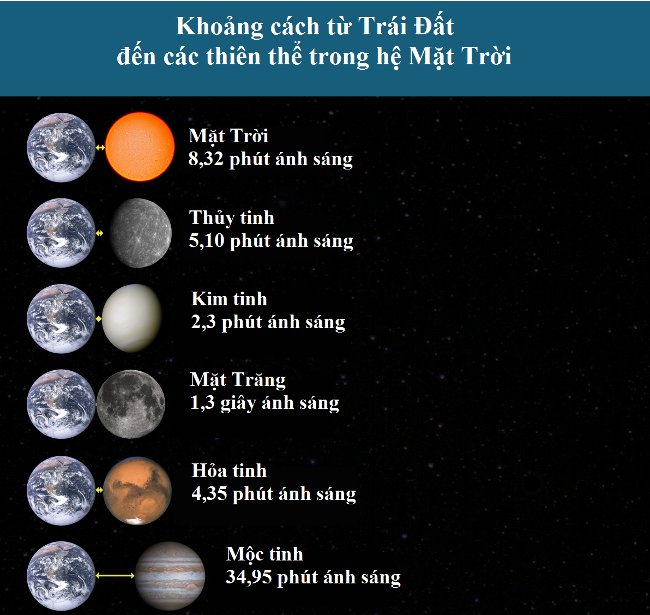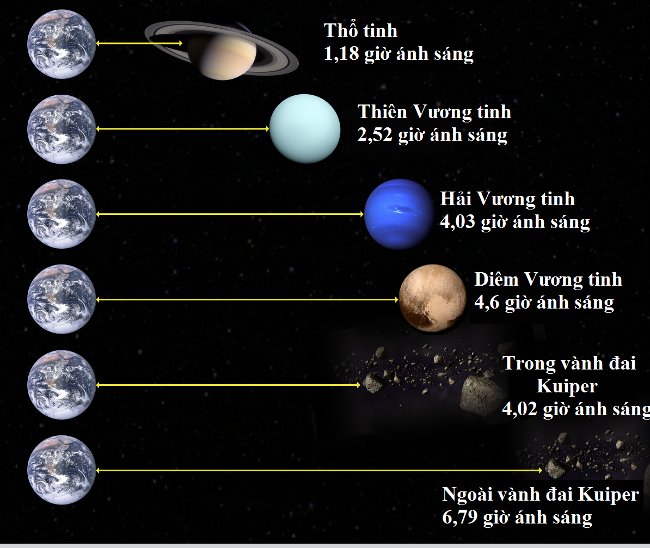The distance from the Earth to the celestial bodies in the solar system
If crafting a spacecraft moving at light speed of 1,080 million km / h, humans could explore distant planets in the solar system in just minutes. However, this is still a dream because the current passenger spacecraft only reached the highest speed of nearly 40,000 km / h.
Distance from Earth to planets in the solar system
- The distance from the Earth to the Sun is 8.32 minutes of light.
- The distance from Earth to Mercury is 5.10 minutes of light.
- The distance from Earth to Venus is 2.3 minutes of light.
- The distance from the Earth to the Moon is 1.3 seconds of light.
- The distance from Earth to Mars is 4.35 minutes of light.
- The distance from Earth to Jupiter is 34.95 minutes of light.
- The distance from Earth to Saturn is 1.18 light hours.
- The distance from Earth to Uranus is 2.52 hours of light.
- The distance from Earth to Neptune is 4.03 hours of light.
- The distance from Earth to Pluto is 4.6 hours of light.
- The distance from the Earth to the Kuiper belt planets is: 4.02 hours of light.


More Science Stories
- What is the distance from the Earth to the Sun?
- Detecting celestial bodies coming from the Second Solar System in the universe
- For the first time, identify an object from outside the Solar System
- Planet X
- Beautiful photo from the Solar System
- Planets in the Solar System
- Explore the atmospheric atmospheres of the solar system
- The mysterious X planet is devastating the solar system
- 4 asteroids towards Earth at a speed of 50,000km / h
- How to measure the distance through the center of the Milky Way?
- Where do meteors around the Earth come from?
- Decode the distance from the Earth to the Sun.
 Van Allen's belt and evidence that the Apollo 11 mission to the Moon was myth
Van Allen's belt and evidence that the Apollo 11 mission to the Moon was myth The levels of civilization in the universe (Kardashev scale)
The levels of civilization in the universe (Kardashev scale) Today Mars, the sun and the Earth are aligned
Today Mars, the sun and the Earth are aligned The Amazon owner announced a secret plan to build a space base for thousands of people
The Amazon owner announced a secret plan to build a space base for thousands of people